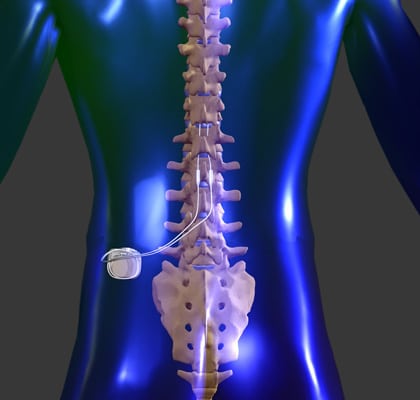
Percutaneous leads are inserted into the spine with an epidural needle and are smaller and easier to remove. There are two categories of leads: percutaneous and paddle. Spinal cord stimulators are composed of two parts: the battery, which powers the device, and the leads, which deliver the stimulation. Spinal cord stimulator removal surgery varies depending on the type of lead your device uses. Modern spinal cord stimulators can send diagnostic information wirelessly, allowing your surgeon to identify mechanical and electrical issues remotely. Let your doctor know if you experience any problems with your device. Infections are more common near the battery pack than in the leads. Infection around a spinal cord stimulator can cause swelling, redness, pain or discharge in that specific area or more general symptoms like fever or delirium. In rare cases, the device can malfunction, causing pain or a sudden jolting sensation.
Spinal cord stimulator permanent restrictions generator#
If the lead or pulse generator (battery pack) breaks - after a fall or other trauma or just normal wear and tear - the paresthesias will cease completely, and you will no longer have any pain relief from your stimulator. This often reduces your device’s ability to control your pain, so it will feel more severe. If the leads (the implants) move, the tingling sensation caused by your stimulator (often called paresthesias) will shift to a different part of the body. Other than not providing sufficient pain relief, a spinal cord stimulator could lead to problems that may require additional procedures to maintain or reposition the device. This can happen for many reasons, including mechanical failures, infections and general lack of efficacy.


“We typically let patients decide whether they keep their device or not most live with the stimulator for two to three years before considering removal.” What could go wrong with a spinal cord stimulator, and how can you tell?Ī spinal cord stimulator, although a safe and tested device, may experience issues after being implanted for several years. As a rule of thumb, surgeons aim for at least a 50% reduction in pain when initially implanting a spinal cord stimulator, but there’s no objective way to gauge pain levels. “The most common reason for spinal cord stimulator removal is inadequate pain relief,” says Anderson. Spinal cord stimulator removal is a surgical procedure to take out a spinal cord stimulator, a device that was originally implanted above the spinal cord to manage chronic pain. Anderson, who specializes in functional neurosurgery including neuromodulation techniques, discusses why some patients choose later to reverse the procedure. While some people with chronic pain enjoy enormous benefit from spinal cord stimulation, these devices don't work out for everyone.


 0 kommentar(er)
0 kommentar(er)
